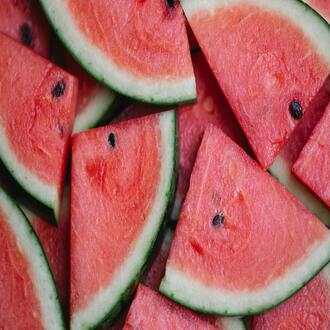Transcription Allergens in cereals
They are called cereals to the seeds of grasses, such as wheat, rice, corn, barley, oats and others. Grasses are the plants that contribute most to the world economy, contributing directly to human food by providing grains, flours, oils and cattle and poultry feed in order to obtain eggs, milk and meat.
Grasses are involved in the origin and development of different health disorders in people, among them are allergies, which can be produced by inhaling the pollen of the plant and also by ingesting cereal grains, flours, oils or products containing them. Characteristics of cereal allergies:
- The origin of cereal allergies is associated with the consumption of different types of cereals. The most commonly used are: wheat, rice, corn, barley, oats.
- The number of people allergic to each cereal depends on the eating habits of each region. Wheat allergy is more common in Great Britain, Spain and the United States, while rice allergy is common in Southeast Asian countries such as Japan.
- Wheat, oats and rye contain gluten, the consumption of this protein causes the development of different disorders such as celiac disease and allergy. It is important to differentiate between allergy and celiac disease, wheat allergy is an immunoglobulin e mediated disease and celiac disease is a chronic, multi-organ, immune-based process with a genetic background.
Food allergy to wheat, barley, oats, etc., can manifest at any age. Cereals should never be introduced to infants before the age of four months. Currently there is a tendency to introduce them between 5 and 6 months, preferably at 6 months.
The most frequent cause of respiratory allergy in Spain and in Europe are grasses, both those that grow alone on roadsides called spontaneous grasses, and cultivated grasses: wheat, barley and rye.
In grass allergies the most important allergen is pollen. There is cross-reactivity among all grass allergies, and people allergic to grasses are generally allergic to the pollens of all grasses, whether spontaneous or cultivated.
During the pollen period, unwashed fruit with skin may contain impacted pollen grains on the surface, which can cause dermatitis and itching or inflammation of the mouth. There is no cross-reactivity between respiratory grass allergy and food allergy to cereals. Most patients with grass allergy consume cereals without problems.
Proteins of reserves, such as wheat gluten and others that protect the grain from fungal, bacterial or insect attacks. Globulins and glutelins are considered the antigens responsible for immediate hypersensitivity to cereals.
Albumins are considered the most important allergens that cause asthma caused by flour inhalation (baker's disease). Water soluble proteins (albumins), salt soluble proteins (globulins) and alcohol and water soluble proteins (gliadins), contained in wheat, barley and rye, are responsible for immunoglobulin e mediated responses, both for their role in atopic dermatitis and inhalation sensitization.
Pollen is the most important allergen at the origin of respiratory allergy caused by grasses.
Food products that may contain wheat: Bread crumbs, bran, cereal extract, couscous, crackers, flour, gluten, high-gluten flour, high-protein flour, spelt, vital gluten, wheat bran, wheat germ, wheat malt, wheat starch, whole wheat flour.
Gelatinized starch, hydrolyzed vegetable protein, kamut, modified starch, natural flavorings, soy sauce, vegetable starch, chewing gum.
Cereal beverages, coffee substitutes, beverages made from wheat products: beer, non-alcoholic beer. Instant chocolate drink powders.
Wholemeal white bread, breadcrumbs, rolls. Bagels, sweet rolls, muffins, French toast, toasted sponge cake. Prepared mixes for making biscuits. Corn bread, potato bread or soy bread, unless made without wheat flour or derivatives. Cereals made from flour, wheat or those to which wheat or malt products have been added, biscuits, crackers.
Cakes, cupcakes, commercial meringues, ice cream, sherbet, waffles, prepared powders, pudding containing wheat flour, whole wheat crackers.
Soufflés or creamed eggs made with wheat products. Any thickened salad dressings, sauces containing wheat flour or wheat products. Mashed fruits with cereals.
All breaded meats dredged in flour, sausage or meat patties. Malted milk, milk beverages containing wheat cereal powder or wheat products. Cottage cheese with modified starch or other ingredients containing wheat.
Baked potatoes with bread crumbs. Noodles, spaghetti, macaroni and other pasta products prepared with wheat flour or semolina. Cream soups, soups with noodles, soup thickened with wheat flour. Chocolate candies containing malt, candies with cereal extract.
Floured vegetables. Malt products, sodium glutamate (MSG), meat tenderizers containing MSG. Food products that may contain rice. Rice can be found in beverages such as Japanese sake, as well as in rice shakes in health food stores.
Food products that may contain corn. We can find corn in the form of starch in many processed products, in yeast powders, in candies.
Products that can be processed from corn: dextrin, maltodextrin, dextrose, fructose, delta lactone glucose, invert sugar, invert syrup, malt, malt syrup, malt extract, mono- and di-glycerides, mono-sodium glutamate, sorbitol, starch.
Indications for the treatment of allergies due to consumption of cereals or foods containing them. To avoid reactions after ingestion of cereals, allergy sufferers should follow a strict diet that does not contain the cereal to which they are sensitive.
Careful reading of labels in order to discover possible allergenic ingredients. Avoid consuming products where there are ingredients described without due specifications, e.g. "contains vegetable products".
cereals




